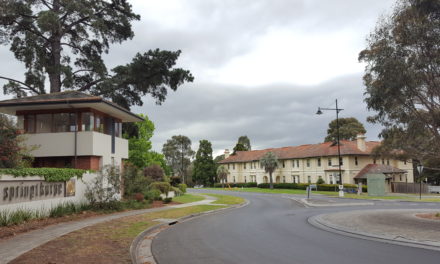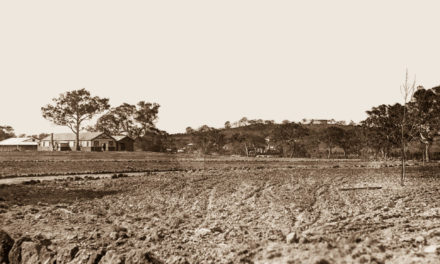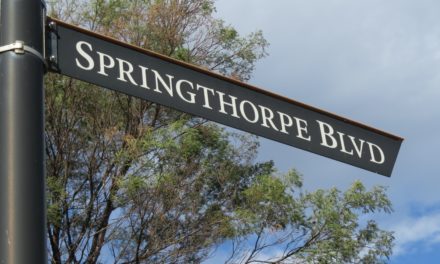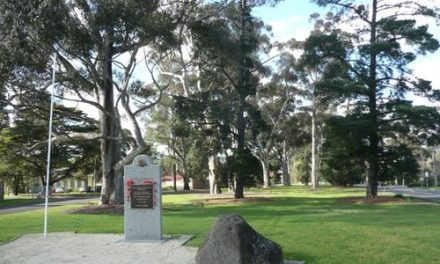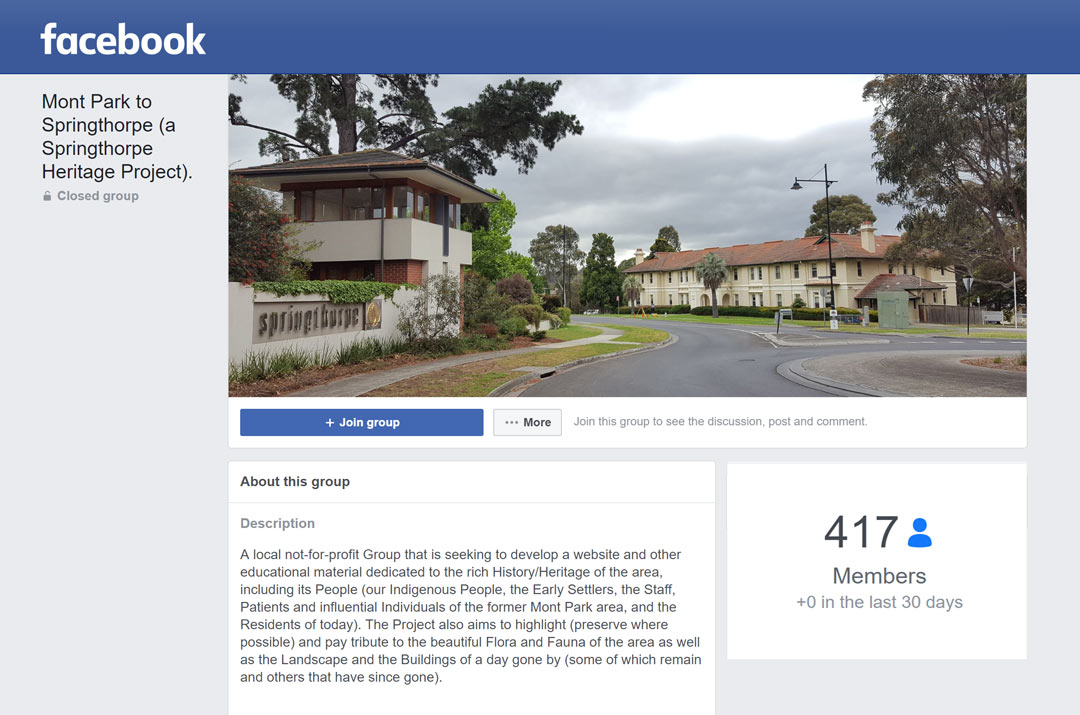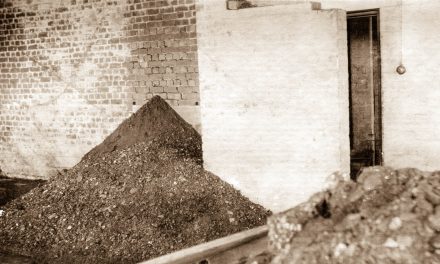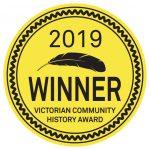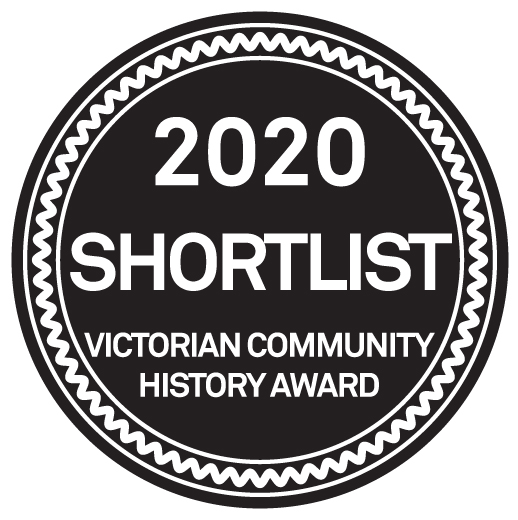Before Early 1800’s
Throughout the preceding 30,000 – 40,000 years our Indigenous people occupied the land. The land around the Mont Park/Bundoora area was occupied by the Wurundjeri-willam people.
(City of Darebin. A Rich Heritage: The Story of Bundoora Homestead. 2016.)
1801
Early explorers started to sail into Port Philip Bay and explore the surrounding area.
(https://en.wikipedia.org/wiki/Timeline_of_Melbourne_history)
1835
The first Europeans (John Batman and his three ‘white’ assistants, and six ‘New South Wales Aborigines’) sailed into Port Phillip Bay enroute to the Yarra River where the signing of the ‘Batman’s Treaty’ allegedly took place (a Treaty that was later that same year ‘voided’ by Governor Bourke).
(Forster. H.W. Preston – Lands & People 1838-1967. 1968. https://en.wikipedia.org/wiki/Batman%27s_Treaty)
1837
Melbourne’s population is reported to be ‘in the hundreds’ with approx. 100 buildings including slab huts and tents. William Wedge Drake surveys the (now) Darebin area principally to enable the sale of the land.
(Stewart Ross. C. Horatio Cooper – a forgotten pioneer’ / ‘Springthorpe and La Trobe Heritage Project. The Springthorpe Area: a Brief History. 2016.)
1838
The next few years (into the 1840’s) was quite a ‘land rush’ with a great deal of land buying/selling and ‘profiteering’.
(Springthorpe and La Trobe Heritage Project. The Springthorpe Area: a Brief History. 2016.)
1839
Land in the area was sold to Neil Campbell (where Mont Park was to be) and also Horatio Cooper (where Bundoora Park is now).
(Stewart Ross. C. Horatio Cooper – a forgotten pioneer’ / ‘Springthorpe and La Trobe Heritage Project. The Springthorpe Area: a Brief History. 2016.)
1842
The same local land then sold to Malcolm McLean (a Scottish Settler) and the new Estate was named ‘Strathallan’.
(‘Springthorpe and La Trobe Heritage Project. The Springthorpe Area: a Brief History. 2016.)
1846
Victoria (then known as The Port Phillip District of New South Wales) appropriated 1,000 Pounds from the NSW Council to built a Lunatic Asylum near Melbourne (in Fairfield near where in 1871 the Kew Asylum was also built). The build was completed in 1848 and locally known as the Merri Creek Lunatic Asylum (later the Yarra Bend Lunatic Asylum).
(Reischel, Harald Johann. The Care That Was. 2003.)
1847
Melbourne is declared a City by Queen Victoria.
(https://en.wikipedia.org/wiki/Timeline_of_Melbourne_history)
1849
The Plough Inn at Mill Park sponsored the Plough Cup (Thoroughbred Racing) which was held at the Janefield Racecourse around this time.
(Kenna, Les. In The Beginning There Was Only The Land. 1988.)
1850
On 11/11/1850, the Port Phillip Herald reports “Glorious News! Separation at Last! … The long-oppressed, long-buffeted Port Phillip is at length an Independent Colony, gifted with the Royal name Victoria…”
(Reischel, Harald Johann. The Care That Was. 2003.)
1850’s
Malcolm McLean returned to Scotland and he leased his land here (‘The Strathallan Estate’) to a number of tenant farmers for grazing and dairy purposes.
(Springthorpe and La Trobe Heritage Project. The Springthorpe Area: a Brief History. 2016.)
1851
The area suffered ‘Black Thursday’ fires on the 6/2/1851 when after a very hot 1850-1851 summer a 47 degree Celsius day, saw bushfires break out across the area and the State.
(Kenna, Les. In The Beginning There Was Only The Land. 1988.)
The Victorian Gold Rush commences with the discovery of Gold at Buninyong.
(https://en.wikipedia.org/wiki/Timeline_of_Melbourne_history)
Victoria formally becomes an independent colony (after having earlier been known as The Port Phillip District of New South Wales).
(https://en.wikipedia.org/wiki/History_of_Victoria)
1852
During 1852, an average of more than 1,800 immigrants a week disembarked in Melbourne, in large part to make their way to the Victorian Goldfields. Victoria’s population increased from 76,000 to 540,000 over the next 10 years.
(https://en.wikipedia.org/wiki/History_of_Victoria)
1853
The MCG oval and first pavilion were established on its current site.
(http://www.mcg.org.au/the-stadium/mcg-history)
Melbourne’s first water supply was inaugurated on 20/12/1853 with the building of the Yan Yean Reservoir. The main water pipe to Melbourne ran along Plenty Rd and was completed by 1857.
(Edwardes, Phillip. Towards a Social History of La Trobe University Wildlife Reserve: an investigation of the ‘Historical Dunny’ on the former Mont Park Hospital Farm. 1998.)
1854
The original Flinders Street Station was built (later rebuilt) and the first Steam Engine journey occurs.
(https://en.wikipedia.org/wiki/Timeline_of_Melbourne_history)
1857
Melbourne’s first city streets were lit using gas lighting.
(https://en.wikipedia.org/wiki/Timeline_of_Melbourne_history)
1860
The Burke & Wills expedition departed Royal Park.
(https://en.wikipedia.org/wiki/Timeline_of_Melbourne_history)
1861
The Preston area’s population was reported to be 623 in 1861 (3,563 in 1891 / 5,049 in 1911 / 6,555 in 1921 / 33,442 in 1933 / 46,775 in 1947 / 89,706 in 1966).
(https://en.wikipedia.org/wiki/Preston,_Victoria#Population)
1861
The running of the first Melbourne Cup thoroughbred horse race.
(https://en.wikipedia.org/wiki/Timeline_of_Melbourne_history)
1876
Alexander Graham Bell invents the Telephone.
(Anderson, Rick. Stopping All Stations. 2010.)
1880
Thomas Edison invented ‘Electric Light’ and the first Telephone Exchange opened in Melbourne.
(Anderson, Rick. Stopping All Stations. 2010.)
Ned Kelly was hanged in Melbourne Goal.
(https://en.wikipedia.org/wiki/Timeline_of_Melbourne_history)
1885
Melbourne first Cable Tram line opened.
(https://en.wikipedia.org/wiki/Timeline_of_Melbourne_history)
1888
A Single Track Railway line was opened to Heidelberg Station (eventually completed as a Single Track Line all the way to Hurstbridge in 1912).
(Anderson, Rick. Stopping All Stations. 2010.)
1890
A Melbourne to Whittlesea Rail line began operation and ran through the North-West corner of Mill Park.
(Kenna, Les. In The Beginning There Was Only The Land. 1988.)
1890’s
Property prices dropped dramatically as ‘the land bust’ occurred after ‘the land boom’. This saw ‘The Depression’ hit Victoria in 1892 and forced most of the then land-owning class into bankruptcy and ruin.
(Kenna, Les. In The Beginning There Was Only The Land. 1988.)
1894
The first city streets were lit using Electricity.
(https://en.wikipedia.org/wiki/Timeline_of_Melbourne_history)
1896
State Government passed an Electric Light and Power Act to regulate the use of Electricity across Melbourne. Power Stations did not operate on Sundays and street lights went out at midnight.
(https://www.powercor.com.au/media/1251/fact-sheet-electricity-in-early-victoria-and-through-the-years.pdf)
1897
The first season of VFL (Aussie Rules Football) was played.
(https://en.wikipedia.org/wiki/Timeline_of_Melbourne_history)
1899
John Matthew Vincent Smith (1857-1922) buys 606 Acres of Land (now Bundoora Park and the home he built i.e. the Bundoora Homestead). Smith was a prominent Horse Racing and Horse Breeding identity.
(City of Darebin. A Rich Heritage: The Story of Bundoora Homestead. 2016.)
1900
The first Motorised cars were seen in Melbourne but they were a rare sight until after about 1910 when they slowly became more common. In 1916 Road Rules were first applied. And from 1917 to 1922 (after WWI) registrations of vehicles in Melbourne doubled to 44,000 (cars, motorcycles and trucks).
(https://museumsvictoria.com.au/marvellous/powered/car.asp)
1901
Australia became a Commonwealth and Melbourne was named as the nation’s Capital City.
(https://en.wikipedia.org/wiki/Timeline_of_Melbourne_history)
1902
The railway line was extended from Heidelberg to Eltham with the stations of Greensborough and Eltham added/opened.
(Anderson, Rick. Stopping All Stations. 2010.)
1904
Dan Astley Gresswell dies.
(http://adb.anu.edu.au/biography/gresswell-dan-astley-6481)
1905
Dr William Ernest Jones takes over from Dr McCreery as the new ‘Inspector General of the Insane’ (heading up the ‘Victorian Lunacy Department’).
(Springthorpe and La Trobe Heritage Project. The Springthorpe Area: a Brief History. 2016.)
1906
The first Electric Tram Service began operation.
(https://en.wikipedia.org/wiki/Timeline_of_Melbourne_history)
Dr Ernest Jones and the then Victorian Premier Mr Thomas Bent ascended to the top of Sugarloaf Hill (now Gresswell Hill) and selected Strathallan/Bundoora Park/Mont Park (now Macleod) as the site for the new Mont Park Hospital for the Insane (Mental Asylum).
(http://www.wikinorthia.net.au/the-mont-park-asylum/)
1908
The area was formally acquired by the State Government to become the Mont Park Hospital for the Insane, but not before there was some significant consideration given to the area instead being the site of a new Prison, an idea that was later successfully objected to by many locals.
(http://www.wikinorthia.net.au/the-mont-park-asylum/)
1910
The Victorian Inspector General for the Insane, Dr Ernest Jones, began building the Mont Park Hospital for the Insane starting with the Farm Workers’ Block that still exists to this day on Main Drive.
(Kenna, Les. In The Beginning There Was Only The Land. 1988.)
1911
Macleod Station opens after 75 acres of land was acquired from Malcolm Macleod. This purchase enabled the Mont Park rail line to be built which ran up into the Hospital grounds to the Mont Park Rail Platform & and Siding. This spur line was primarily intended to carry goods such as briquettes and building materials.
(http://www.wikinorthia.net.au/the-mont-park-asylum/)
1912
The Mont Park Hospital for the Insane was formally opened, and the first 60 patients were transferred across from the Yarra Bend Asylum.
(https://trove.nla.gov.au/newspaper/article/196248304)
The Railway line was extended from Eltham to Hurst’s Bridge (soon after renamed Hurstbridge) with the stations of Diamond Creek and Wattle Glen added/opened.
(Anderson, Rick. Stopping All Stations. 2010.)
Renowned Landscape Gardener Hugh Linaker was appointed as the Landscape Gardener at Mont Park Hospital for the Insane (until 1937).
(https://en.wikipedia.org/wiki/Hugh_Linaker)
Construction was completed of the Water Tank (designed by Sir John Monash) on Mt Sugarloaf (now Gresswell Hill) that supplied water to the Hospital and was connected to the Water Main at Morang South.
(http://www.aholgate.com/tstexts/ts_misc.html)
1914-1918
World War I.
1915
Anzac’s landed at Gallipoli during World War I (25/4/15).
(Anderson, Rick. Stopping All Stations. 2010.)
1916
The introduction of the 6pm closing for all Hotels/Pubs (abolished in 1966).
(https://en.wikipedia.org/wiki/Timeline_of_Melbourne_history)
1919
The ‘Avenue of Honour’ was planted by Mont Park soldiers/patients (supervised by Hugh Linaker) along Military Rd (now Cherry St). There were 46 Sugar Gum (Eucalyptus) trees planted there at this time. More planting occurred after World War II in 1946.
(Springthorpe and La Trobe Heritage Project. The Springthorpe Area: a Brief History. 2016.)
Electric suburban train services commenced (on the Broadmeadows line).
(https://en.wikipedia.org/wiki/Timeline_of_Melbourne_history)
1920
The Victoria Police Department established a Horse Stud at Bundoora Park which became known as the ‘Police Paddock’.
(Bundoora Park – Development – Existing and Proposed. June 1981.)
1921
Macleod Park was developed (now essentially Macleod Village). Malcolm Macleod was a Councillor at the City of Heidelberg at this time.
(Springthorpe and La Trobe Heritage Project. The Springthorpe Area: a Brief History. 2016.)
1923
Montmorency Rail Station opened.
(Anderson, Rick. Stopping All Stations. 2010.)
1924
Watsonia Station opened.
(Anderson, Rick. Stopping All Stations. 2010.)
Melbourne’s first Radio station broadcasts (3AR – now known as Radio National).
(https://en.wikipedia.org/wiki/Timeline_of_Melbourne_history)
The Smith Family’s Bundoora Homestead (see 1899) became the Bundoora Repatriation Hospital and opened with 17 Staff. Administration was carried out by Mont Park staff as it assisted and rehabilitated returning WWI soldiers.
(City of Darebin. A Rich Heritage: The Story of Bundoora Homestead. 2016.)
1925
John Logie Baird invents ‘Television’.
(Anderson, Rick. Stopping All Stations. 2010.)
1927
The Ernest Jones Hall (designed by Architect Evan Smith) was built and was both a Chapel and a Recreational Facility. This Hall is still there today and featured briefly in the hit US Mini-Series ‘The Pacific’.
(Springthorpe and La Trobe Heritage Project. The Springthorpe Area: a Brief History. 2016.)
Rosanna Station opened.
(Anderson, Rick. Stopping All Stations. 2010.)
1928
The Mont Park Railway Line is ‘Electrified’. The State Government Health Department paid for the ‘Electrification’ of the line to be carried out.
(https://en.wikipedia.org/wiki/Mont_Park_railway_line)
The first set of Traffic Lights are operated on the corner of Swanston and Flinders St’s.
(https://en.wikipedia.org/wiki/Timeline_of_Melbourne_history)
1929
The Great (World) Depression starts with the Wall St Market Crash.
(Anderson, Rick. Stopping All Stations. 2010.)
1931
Sir John Monash dies.
(https://en.wikipedia.org/wiki/John_Monash)
1932
The final group of soldiers/patients were transferred from the Mont Park Military Mental Block to the Bundoora Repatriation Hospital.
(Kenna, Les. In The Beginning There Was Only The Land. 1988.)
The opening of the Sydney Harbour Bridge.
(Anderson, Rick. Stopping All Stations. 2010.)
1933
Dr John Springthorpe dies.
(https://en.wikipedia.org/wiki/John_Springthorpe)
1934
Mont Park became known as a ‘Mental Hospital’ rather than a ‘Hospital for the Insane’.
(Springthorpe and La Trobe Heritage Project. The Springthorpe Area: a Brief History. 2016.)
1938
The construction of Larundel commences (designed by Public Works Architect Percy Edgar Everell). The culmination of this construction wasn’t to conclude for another 15 years owing to one reason and another, including the intervening WWII.
(Springthorpe and La Trobe Heritage Project. The Springthorpe Area: a Brief History. 2016.)
Renowned Mont Park Landscape Gardener, Hugh Linaker dies.
(Springthorpe and La Trobe Heritage Project. The Springthorpe Area: a Brief History. 2016.)
1939-1945
World War II.
1942
Such was the labour shortage across Victoria owing to men going offshore to fight in WWII, the Australian Women’s Land Army was established.
(Kenna, Les. In The Beginning There Was Only The Land. 1988.)
1945
Dr John F Cade returned from WWII and established (after much trial and error on both guinea pigs and later himself at Bundoora Repatriation Hospital) the use of Lithium as a medication to treat Manic Depression/Bipolar Disease.
(City of Darebin. A Rich Heritage: The Story of Bundoora Homestead. 2016.)
1946
The ‘Railway (Mont Park Siding) Act’ of 1946 was enacted to enable passengers to travel on the route (however this opportunity was never formally utilised).
(https://en.wikipedia.org/wiki/Mont_Park_railway_line)
1951
At this time a Dual Track Rail Line made its way from the City to Ivanhoe Station only, and around this time the train to Mont Park was running about once per week.
(Anderson, Rick. Stopping All Stations. 2010.)
1950’s
Pamela Murphy in ‘Back in them Days’ describes Plenty Road as a narrow street without many lights, no houses, open paddocks for miles, and the roads weren’t properly made. Beautiful big old Gum Trees everywhere and bluestone rock fences. The horses were in the Police Paddock and the Mont Park farm had black and white Friesian cows.
(Preston City Library Project, edited by Jones.L Roger. Back in them Days – An Oral History of Preston. 1994.)
1952
English Psychiatrist Dr E Cunningham Dax was appointed as Chairman of the newly created Mental Hygiene Authority (Victoria).
(Reischel, Harald Johann. The Care That Was. 2003.)
1953
Larundel Mental Hospital (on Plenty Rd) finally opened. The Mont Park ‘Farm Workers Block’ became part of Larundel due to its proximity to Larundel.
(http://heritage.darebinlibraries.vic.gov.au/article/328)
1954
“At this time there were only five (5) Government High Schools in the general Northern area (Essendon, Coburg, Preston Girls, Preston Boys & Eltham). Over the next decade or so another 29 Gov’t High/Secondary opened.”
(Forster. H.W. 1968. Preston – Lands and People 1838-1967.)
After some criticism about the lack of hygiene to do with the milking process in the Dairy in Mont Park (located on the corner of Plenty Rd and Kingsbury Drive), milking machines were installed.
(Kenna, Les. In The Beginning There Was Only The Land. 1988.)
1955
First Stage of the Snowy River Mountain Scheme finished.
(Anderson, Rick. Stopping All Stations. 2010.)
1956
The introduction of drugs such as Ataractic tranquillisers around this time changed the conditions in the Wards at Mont Park and Larundel due to this new ‘behaviour modification’ approach.
(Kenna, Les. In The Beginning There Was Only The Land. 1988.)
Television starts in Melbourne (HSV7). Melbourne (The MCG) hosts the 1956 Olympic Games.
(https://en.wikipedia.org/wiki/Timeline_of_Melbourne_history)
1957
The initial Meeting at the Staff Social Centre Mental Hospital (Mont Park) re the development of the Strathallan Golf Club as an entity and as a member-based Golf Course and Club.
(Strathallan Golf Club. The History of the Strathallan Golf Club. Volume 1 Issue 1 June 2007.)
Dr William Ernest Jones dies. It is reported that his ashes were spread in front of Ernest Jones Hall on what is now known as Ernest Jones Drive in the Springthorpe Housing Estate (Macleod).
(Springthorpe and La Trobe Heritage Project. The Springthorpe Area: a Brief History. 2016.)
1958
Saw the changing of mental health treatment methods for Mont Park patients including less ‘Farm Work’ as part of their rehabilitation. This year also saw complaints from local residents re unpleasant odours, that led to the closure of the Piggery operation on the Farm.
(Kenna, Les. In The Beginning There Was Only The Land. 1988.)
Late 1950’s to early 1960’s
Only Plenty Rd and Grimshaw St were made roads in the broader Mont Park/Bundoora area, roads so narrow that barely two cars could pass. There were no footpaths and Settlement Rd was still ‘un-made’ with a single lane wooden bridge where Settlement Rd crossed Darebin Creek.
(Kenna, Les. In The Beginning There Was Only The Land. 1988.)
1962-1975
Australia became involved in the Vietnam War.
1964
The Mont Park Railway line operation ceased as the last train ran up the hill for the final time on the 23/6/64 and the Line officially closed on the 30/6/1964.
(Anderson, Rick. Stopping All Stations. 2010.)
1964
Saw the selection of the broader Mont Park Farm area as the site for the new La Trobe University. To this end Mont Park farmland was given over by Cunningham Dax (Head of the Mental Health Authority) in exchange for land further north along Plenty Rd.
(https://en.wikipedia.org/wiki/La_Trobe_University#Selecting_the_site)
The Beatles visited Melbourne.
(Anderson, Rick. Stopping All Stations. 2010.)
1965
Social Action by the local community successfully stopped Bayview Quarries Pty Ltd from quarrying 76 hectares of land positioned between Plenty Rd and where the Bundoora Primary School now sits.
(Kenna, Les. In The Beginning There Was Only The Land. 1988.)
1966
Australia converted to Decimal Currency.
(Anderson, Rick. Stopping All Stations. 2010.)
1967
La Trobe University officially opened. 550 students were enrolled in this first year. Fourten years later (1981) there were 8,500 students and 2,000 Lecturers, Tutors, Staff and Admin attending the University.
(Kenna, Les. In The Beginning There Was Only The Land. 1988.)
1968
Ms Muriel Yarrington (Nursing Advisor, Mental Hygiene Branch) died after a battle with cancer. Ms Yarrington was held in high regard for her vision and tireless work in promoting Psychiatric Nursing as a highly respectable profession, and developed that profession’s educational pathway into the University curriculum.
(Reischel, Harald Johann. The Care That Was. 2003.)
Nature Reserve Wildlife Staff persuaded operators that were part of a local Earth Moving Equipment Exhibition to excavate areas around Mont Park, near where the La Trobe University Wildlife Reserve currently is).
(Edwardes, Phillip. Towards a Social History of La Trobe University Wildlife Reserve: an investigation of the ‘Historical Dunny’ on the former Mont Park Hospital Farm. 1998.)
1969
Visiting Nursing Services were established by Mont Park (and other locations) as part of the then broader approach to ‘integrate and normalise’ patient environments and experiences, as part of their mental health care.
(Reischel, Harald Johann. The Care That Was. 2003.)
Neil Armstrong landed on the Moon.
(Anderson, Rick. Stopping All Stations. 2010.)
1973
The Bundoora Park Golf Course opened.
(Bundoora Park – Development – Existing and Proposed. June 1981.)
1975
Colour Television transmission commenced in Melbourne.
(https://en.wikipedia.org/wiki/Television_in_Australia)
Late 1960’s to early 1970’s
The remaining Mont Park rail tracks were lifted and used elsewhere on the network, reportedly including for the use by ‘Puffing Billy’ (Note: Some remnants of the Mont Park line including stanchions/electric poles and the track path and bluestone rocks remain in the area at Cherry Street Reserve to this day).
(http://www.vicsig.net)
1978
Completion of the Westgate Bridge.
(Anderson, Rick. Stopping All Stations. 2010.)
1980
Dr John Cade died.
(https://en.wikipedia.org/wiki/John_Cade)
1982
Melbourne’s subway system (The City Rail Loop) opened.
(https://en.wikipedia.org/wiki/Timeline_of_Melbourne_history)
1983
The Melbourne Dust Storm and Ash Wednesday Fires.
(https://en.wikipedia.org/wiki/Timeline_of_Melbourne_history)
Late 1980’s
‘Decommissioning’ was the euphemism used for the beginning of the closure of mental hospitals in the late 1980s. And ‘Deinstitutionalisation’ was the term used to explain the shift in policy that saw (where possible) patients with psychiatric illnesses treated as out-patients living in the community rather than as in-patients residing in Hospitals.
(Reischel, Harald Johann. The Care That Was. 2003.)
1991
Melbourne experienced a severe economic slump. Interest Rates rose considerably (to around 18%). Property markets crashed, and many people found themselves unable to pay back housing loans and as such lost their homes to the Banks.
(https://en.wikipedia.org/wiki/Timeline_of_Melbourne_history)
Early to mid 1990’s
Much of the Mont Park and Larundel Hospital surrounds was progressively closed down and the structures began to be demolished as the State Government’s Land Authority initiated plans to have the broader Mont Park-Larundel area sold off and redeveloped as Housing and Open Space and Forest Reserves.
2002
The Springthorpe Housing Estate Development began the sale of the first Lots of land.
2004
The Springthorpe Estate Development wins multiple National Excellence Awards for Residential Development by the Urban Development Institute of Australia (UDIA).
(http://www.macquarie.com.au/mgl/au/about-macquarie-group/news/2004/20040315b.htm)
2009
The Black Saturday Bushfires.
(https://en.wikipedia.org/wiki/Timeline_of_Melbourne_history)
Such had been the extent of the construction of residential homes within the Springthorpe Housing Estate over the previous six or seven years that very few vacant blocks remained as the former Mont Park Hospital site was essentially transformed into a Housing Estate. Numerous former Mont Park buildings that were ‘Heritage Protected’ as well as countless wonderful large Red Gum trees remain and (thankfully) are integrated into the new landscape.


